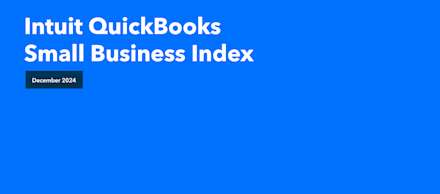
Intuit QuickBooks Small Business Index, December 2024
Simple, smart accounting software - no commitment, cancel anytime

MY FIRST YEAR
As an entrepreneur with a new startup business, you’re prepared to face uncertainty, especially in the financial realm.
When you’re dealing with financial projections, you have a wide range of possibilities available to you. You can take certain steps to create a better financial forecast that helps you plan your future business needs and activities.
The No. 1 purpose of a financial forecast is to give yourself some predictability so you can make good decisions. Before anything else, you should determine how you want to forecast. Accountants often use accrual-based financial reporting, which means you record a sale or expense when you sell your product or perform your service. You don’t wait until you receive or disburse cash.
If you have a new business with no cash, creating a cash-based forecast instead of an accrual-based forecast might be more beneficial. For one thing, this type of forecasting helps you see where your strong and weak payers are. Remember, collecting cash someone owes you often takes time, and invoices you receive can be paid a month later. As you grow, you should have cash flow forecasts and accrual-based forecasts for even better forecasting results.
A good financial forecast model requires the right tools. You need some way of making and changing your forecasts easily. One of your best tools is a spreadsheet, so it’s wise to get familiar with how they work. Using formulas and variables simplifies your life a lot, and an accounting package such as QuickBooks Online can help you create a forward-looking budget with its automated features and reporting capabilities.
To make accurate balance sheet forecasts, you need to understand the source of your revenues and the fundamentals of your costs. A revenue or cost driver is a unit of activity that causes a change in your revenue or cost.
For example, say your business produces shoes.
On the sales front, your revenue drivers are the number of shoes you sell and the price at which you sell them.
On the cost front, your cost drivers might be the amount of material and the cost of the material to produce the shoes.
Other cost drivers are the number of hours it takes to make one shoe and the wages of the employees producing the shoes.
Cost drivers allow you to turn all your products and services into smaller components and attach a price to each. Then you can make forecasts based on what you know about each cost driver on a monthly, quarterly, or annual basis. If you plan to seek investments, you should be aware that investors determine how well you know and understand your business based on how well you define your revenue and cost drivers.
Adjusting your forecasts frequently based on your experiences and results gives you a clearer picture of how to move forward. While your first projection may be overly optimistic or pessimistic, you gain more accuracy once you begin collecting real information about sales and costs. Using the real information for updating your assumptions about revenue or cost drivers improves your financial forecasts. If you expect to sell 500 pairs of shoes but only sell 50, you can update your forecast to something more reasonable until sales start taking off.
Keeping things simple and being realistic are key factors for having a useful forecast for good decision-making.
When starting out, it’s wise to keep things simple. Looking at your core business from different angles makes it easier to see the path to profitability. If things aren’t looking good, taking some time to reevaluate your drivers and making new decisions help increase your pace toward higher profits.
Being realistic helps, too. No matter how great your idea, unless it’s unique, you aren’t likely to get 10% of the known market in year one and 20% in year two. Making unrealistic assumptions might make you profitable on paper, but in reality, it hardly ever happens.
At the end of the day, you want a useful forecast for good decision-making. Your financial forecast should tell you how profitable you may be and what variables need changing to become more profitable. Only when you know these performance indicators can you take action through increasing sales, raising a product’s price or reducing costs. Factoring in your forecasts when building your expansion strategy for new products or territories gives you a greater opportunity for success. Keeping a close eye on your forecasts lets you know if you’re moving too fast or getting too big.
Having the best tools for forecasting, analysing, and tracking what goes on in your business increases the odds of your business success. 5.6 million customers use QuickBooks. Join them today to help your business thrive for free.
Discover QuickBooks Online today
Feel you’re better informed about financial forecasting? The QuickBooks blog covers a wide range of business-related topics – it’s all part of our mission to help small businesses grow.
9.00am - 5.30pm Monday - Thursday
9.00am - 4.30pm Friday